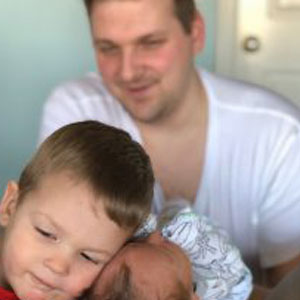The last three weeks I’ve written about how your child’s behavior is maintained by attention, escape, and access to tangibles. If these topics resonated with you, it is most likely your little sweetheart is engaging in problem behaviors, big or small, to get an outcome within their environment. In my field we call these socially mediated behaviors. The last function of behavior, the one I’ll be discussing in this article, is automatically maintained behaviors, and it’s the trickiest of the bunch.
Here we go. We all have needs that only come from within us, physiologically speaking. The most basic examples are hunger, thirst, feeling tired, having to go to the bathroom, and sexual behavior (we’re not going there, this is a kids blog!). In short, each and every day our body has needs and throughout the day these needs fluctuate between being “full” and “empty.” What this looks like for adults is planning our meals, when to grab a drink of water, how much to sleep and so on. Honestly speaking, this what a lot of moms out there are neglecting to plan for because we’re so overwhelmed by planning it for our children.
Fulfilling the Physiological Needs of Children
When it comes to children, fulfilling physiological needs is essential and the second most important thing in their development. Nurturing emotions is number one, but we’ll save that for another time. Through any given day your baby, toddler, or child becomes hungry, thirsty, tired and so on. As parents it’s our job to first figure out these needs during infancy and toddlerhood. As they get older we teach our children the skills to take care of themselves. For the purpose of this blog, automatically maintained behaviors are important to note for two reasons.
The first reason is to help you, as a parent, know “why” your child is throwing a tantrum etc. If you’ve been reading my blogs and gone through the three other functions and are still saying, “OK but my kid is still screaming and none of these things are happening,” there is a good chance your child has a physical need that needs to be met at that moment. When children are tired, hungry, or thirsty they almost always show it in crabby behavior. For Henry, this looks like whining, being more stubborn than usual, and crying easily. These behaviors have nothing to do with anything he wants; he’s being irrational because his body feels off. With Declan and most other babies this just looks like crying. As a parent it’s important to know when your child is being fussy or when they need a meal/nap vs. giving them a teaching moment like we’ve talked about with the other functions. Additionally, it is important to not blame all of your child’s naughty behavior on being tired or hungry. Knowing the function tells you and me, the parents, how to respond. The second reason this is important and much deeper.
The Unique Needs of Children with Autism
Children with autism often have the most difficulty with automatically maintained behaviors. The reason for this is most children with autism have speech delays as well as heightened sensory awareness. From an early age children with autism will often present delays in speech milestones and may look as though they are in their own world. As they move from infancy to toddlerhood their needs change the same as neurotypical children. But children with autism often do not have the language to request what they need or want. For parents, this means a constant guessing game of if their child is hungry, tired, in pain, needing attention, want a toy etc. Additionally, having heightened sensory awareness means that children with autism can either overly enjoy or get overwhelmed by the sensory world. This can manifest itself in ways like getting caught up with a breeze, or how their hands move the air, and even go as far as disliking certain textures and sounds. It is a beautiful, but tough struggle.
Parenting the Best You Can
Children with autism are born perfectly fine. Let me say that again. Your child with autism is perfect. What is hard for your child, however, is understanding the social world and it’s not their fault. What is helpful for a child with autism is learning to adapt to our social world. This means learning language and how to navigate a social tribe (humans). For parents of children with autism this can be tough. But please, dear ones, remember: asking for help is a strength inside all of us. If your young child does have autism I am here as a resource and friend. I also want to help normalize ABA therapy to help more young children and families. Using ABA has made the struggles I’ve written about move from a steep mountain to a manageable hill. It’s not scary therapy, I promise 🙂
Xoxo,
Jessie


